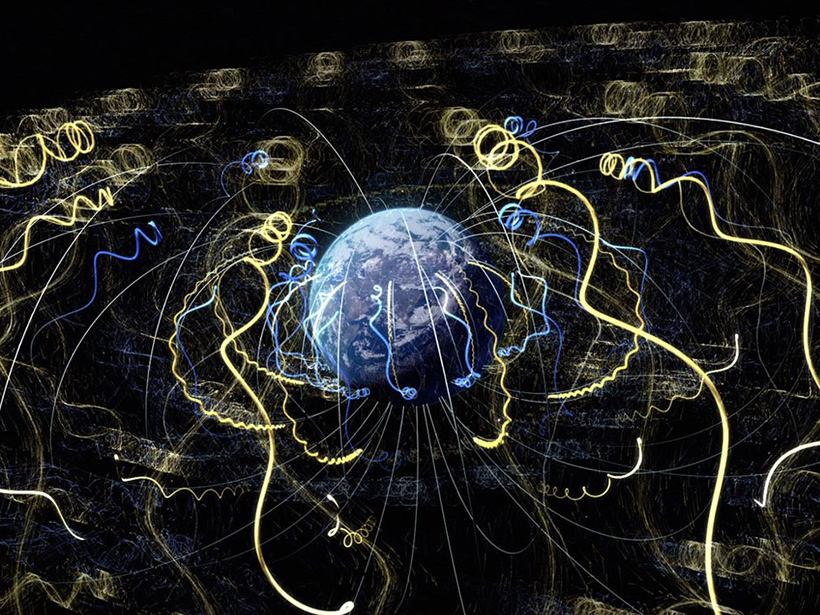Source: Journal of Geophysical Research: Space Physics
In studying the behavior of plasmas, large collections of electrons and ions, physicists often consider a plasma’s kinetic distribution, which depends on both the position and the velocities of the particles. Kinetic distributions are already averaged over time intervals and over tiny regions of phase space, and further averaging yields a coarse-grained “single-fluid” description of the plasma, achieved by taking velocity moments of the entire kinetic distribution.
Zero- and first-order moments yield the plasma’s fluid density and particle flux and hence the single-fluid flow velocity. Second-order moments yield thermal and kinetic energy densities, which describe the single-fluid temperature and bulk kinetic energy associated with the flow velocity.
The satellites in NASA’s Magnetospheric Multiscale Mission have recently measured kinetic particle distributions over time intervals much faster than in earlier missions. These high-resolution distributions frequently show more than one distinct velocity peak, or beam, present at the same time in the same spatial region.
Taking single-fluid moments of such multibeam distributions can yield counterintuitive results. Imagine, for example, two equal beams of particles moving in opposite directions with all particles moving at the same speed. Because their velocities cancel out when averaged, single-fluid moments can appear to contain all thermal energy and no bulk kinetic energy.
Goldman et al. address such misinterpretations by developing methods for taking a new kind of multibeam velocity moment of a measured distribution, in which multiple beams are identified and their single-fluid thermal moments are added together. This approach enables better understanding of how much of the system’s overall fluid energy density is kinetic (i.e., associated with the beam flow velocities) and how much is thermal (i.e., associated with velocity fluctuations about the beam flow velocities). Using the new approach yields the more intuitive result that the multibeam system has all kinetic energy and no thermal energy.
The authors suggest that a multibeam approach offers clear advantages when interpreting energy transport in complex plasmas, although they note that the approach is based on assumptions, such as the number of beams into which a given distribution should be decomposed. Nevertheless, the study reinforces the need for care when interpreting complicated particle distributions. (Journal of Geophysical Research: Space Physics, https://doi.org/10.1029/2020JA028340, 2020)
—Morgan Rehnberg, Science Writer
Citation:
Rehnberg, M. (2020), A new approach to characterizing space plasmas, Eos, 101, https://doi.org/10.1029/2020EO152033. Published on 16 December 2020.
Text © 2020. AGU. CC BY-NC-ND 3.0
Except where otherwise noted, images are subject to copyright. Any reuse without express permission from the copyright owner is prohibited.

